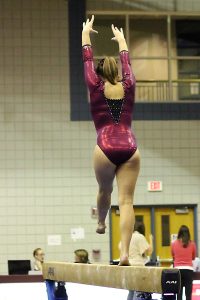Welcome to Facts Vibes! Get ready to be amazed by interesting facts about gymnastics. From its ancient origins to mind-blowing modern feats, this article will take you on a journey through the fascinating world of gymnastics. So, let’s dive into the flips, twists, and sheer athleticism of this mesmerizing sport!
The Fascinating History of Gymnastics
The fascinating history of gymnastics dates back to ancient Greece, where it was a key component of physical education. Greek soldiers used gymnastics to train for warfare, focusing on strength, flexibility, and agility. The Romans also adopted and modified gymnastics in their training regimens for military preparation and to entertain audiences at public events.
During the Renaissance, interest in gymnastics was revived as artists and scholars studied Greek and Roman culture. In the 18th century, Johann Christoph Friedrich GutsMuths, known as the “grandfather of gymnastics,” developed a system of exercises that emphasized balance, strength, and flexibility, paving the way for modern gymnastics.
The sport continued to evolve, and in the 19th century, Friedrich Ludwig Jahn, a German educator, integrated apparatus such as parallel bars, rings, and vaulting horses into gymnastics routines. This marked the beginning of the organized competitive sport we recognize today.
Gymnastics made its Olympic debut at the 1896 Games in Athens, and it has been a staple of the Olympics ever since. The sport has seen remarkable advancements in technique and skill, with athletes pushing the boundaries of human performance.
Today, gymnastics continues to captivate audiences with its combination of strength, grace, and athleticism. It remains a cornerstone of both the Olympic Games and recreational fitness programs, inspiring individuals of all ages to pursue excellence in physical prowess and artistic expression.
Most popular facts
Gymnastics was practiced in ancient Greece and was considered an essential part of a well-rounded education.
Gymnastics was practiced in ancient Greece and was considered an essential part of a well-rounded education.
The first modern gymnastics competition was held in 1896 at the Olympic Games in Athens.
The first modern gymnastics competition was held in 1896 at the Olympic Games in Athens.
The balance beam is only 4 inches wide, making it one of the most challenging apparatus for gymnasts.
The balance beam is only 4 inches wide, making it one of the most challenging apparatus for gymnasts.
Gymnasts often peak in their late teens or early twenties due to the physical demands of the sport.
Yes.
Nadia Comaneci became the first gymnast to score a perfect 10 at the Olympics in
Nadia Comaneci became the first gymnast to score a perfect 10 at the Olympics.
Sure, Information and facts are essential components of knowledge acquisition and understanding.
The uneven bars were originally made from wood and metal, but are now composed of fiberglass with a wood coating.
The uneven bars were originally made from wood and metal, but are now composed of fiberglass with a wood coating.
The floor exercise allows gymnasts to showcase their athleticism and creativity through choreographed routines set to music.
The floor exercise allows gymnasts to showcase their athleticism and creativity through choreographed routines set to music.
Simone Biles is considered one of the greatest gymnasts of all time, winning numerous Olympic and World Championship titles.
Simone Biles is considered one of the greatest gymnasts of all time, winning numerous Olympic and World Championship titles.
Male gymnasts typically compete in six events: floor exercise, pommel horse, rings, vault, parallel bars, and horizontal bar.
Male gymnasts typically compete in six events: floor exercise, pommel horse, rings, vault, parallel bars, and horizontal bar.
The vault requires incredible speed, power, and precision as gymnasts launch themselves over a horse to perform acrobatic maneuvers.
Gymnasts require incredible speed, power, and precision to launch themselves over a horse and perform acrobatic maneuvers on the vault.
Gymnastics is known for its rigorous training regimen, often requiring long hours of practice and conditioning.
Gymnastics is known for its rigorous training regimen, often requiring long hours of practice and conditioning.
The rings event demonstrates upper body strength and control as gymnasts perform challenging strength elements and swings.
The rings event demonstrates upper body strength and control as gymnasts perform challenging strength elements and swings.
Artistic gymnastics is one of the most popular events at the Olympic Games, captivating audiences with gravity-defying skills.
Artistic gymnastics is a popular event at the Olympic Games, captivating audiences with gravity-defying skills.
The pommel horse event showcases a gymnast’s ability to move fluidly while continuously circling the apparatus.
The pommel horse event showcases a gymnast’s ability to move fluidly while continuously circling the apparatus.
Gymnastics provides numerous physical and mental benefits, including improved flexibility, strength, coordination, and discipline.
Gymnastics provides numerous physical and mental benefits, including improved flexibility, strength, coordination, and discipline.
In conclusion, gymnastics is a sport rich in history and filled with fascinating facts that capture the imagination. Whether it’s the incredible physical feats of the athletes or the evolution of the sport itself, there is no shortage of captivating details to explore. From the ancient origins to the modern-day competitions, gymnastics continues to inspire and amaze people around the world.
